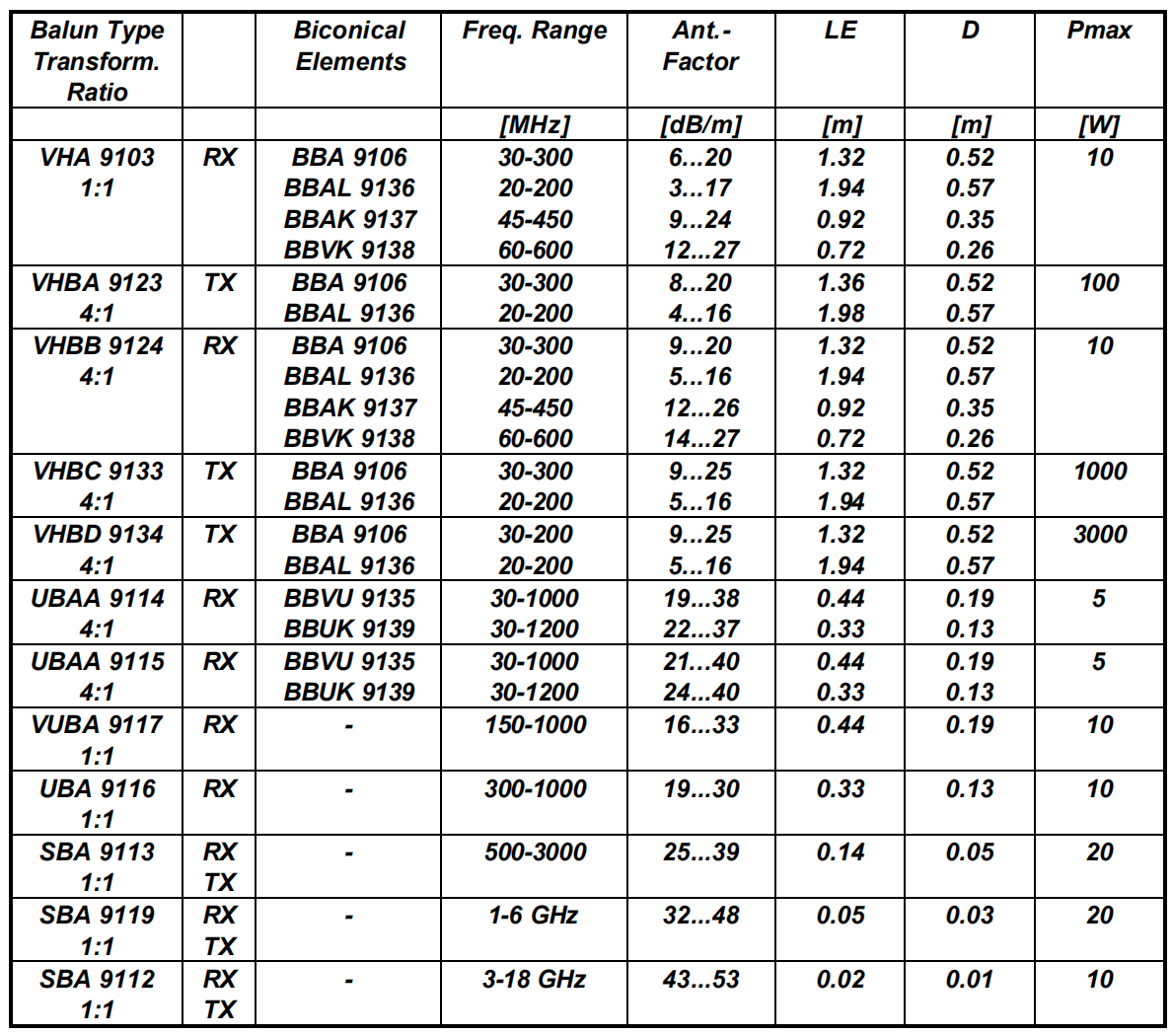 Return
Return
Typical application :
main feature:
The biconical antenna has a dipole-like characteristic, and the biconical unit can obtain a huge broadband. One of the earliest and most popular biconical antenna designs in the world is BBA 9106 and Balun VHA 9103 B. In the past few years, the need to expand the frequency range has increased, which has led to the design of biconical antennas that can reach frequencies of 20 MHz to 18 GHz and above. The use of qualified 4:1 Balun achieves a further increase in bandwidth, providing a typical gain increase of approximately 6 dB in the lower frequency range. Due to the special fixture, the double cone element can be installed and removed in a few seconds, providing perfect contact repeatability. Balun is equipped with a small wrench made of insulating material, which is attached to the Balun head, so it is always available when needed.
Biconical antennas can be used in many applications, among which half-wave dipoles are traditionally used. Since the antenna unit does not need to be tuned to half the wavelength, the measurement time can be greatly shortened, which is an important condition for broadband scanning measurement. Typical dipoles are used to measure discrete frequencies. In contrast, biconical antennas allow continuous frequency sweeping, which makes it easier to find abnormalities.
